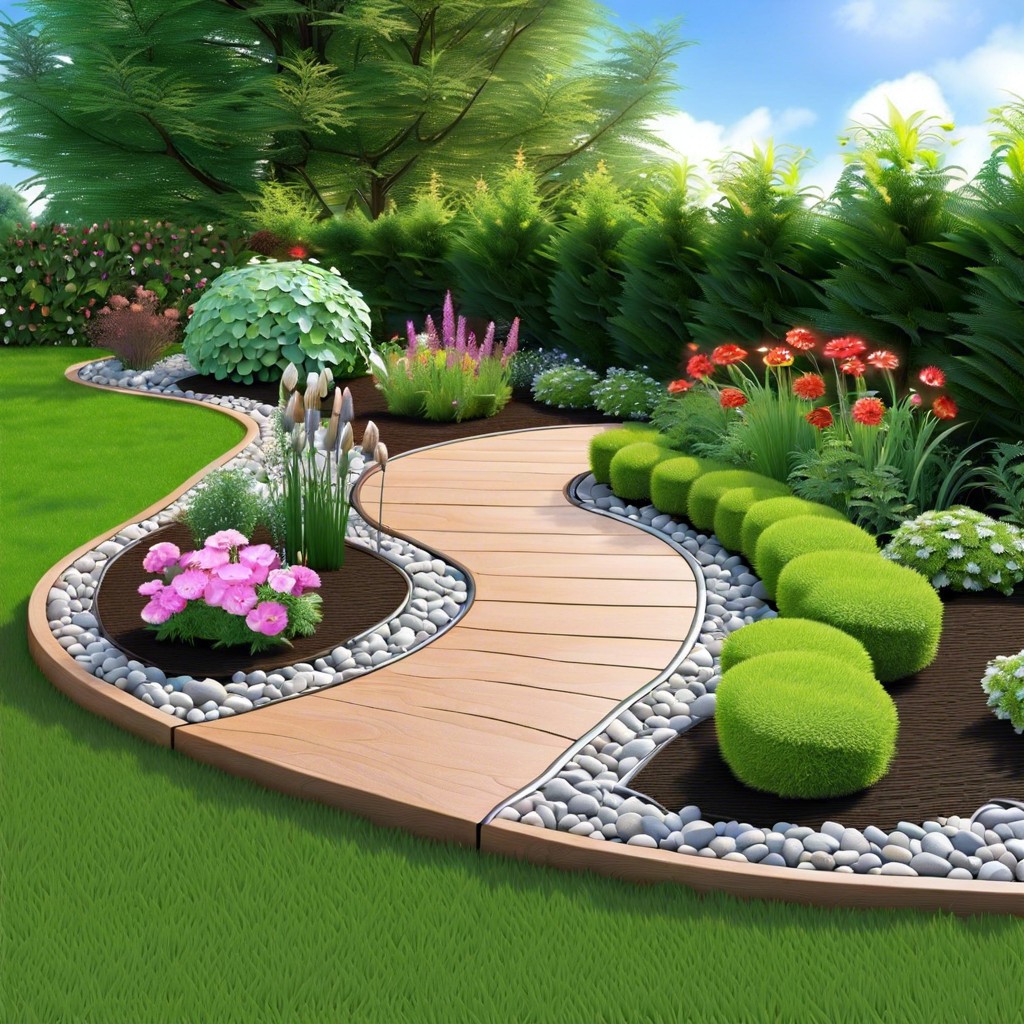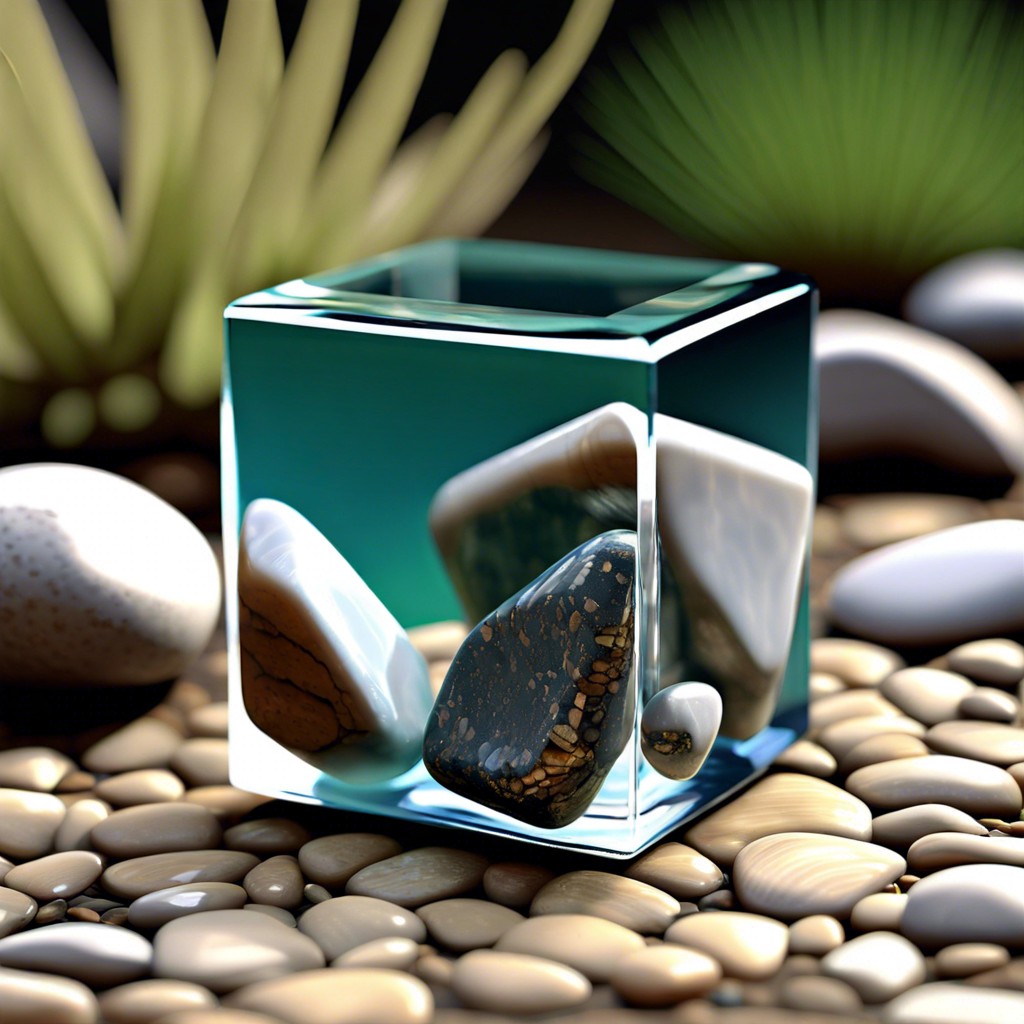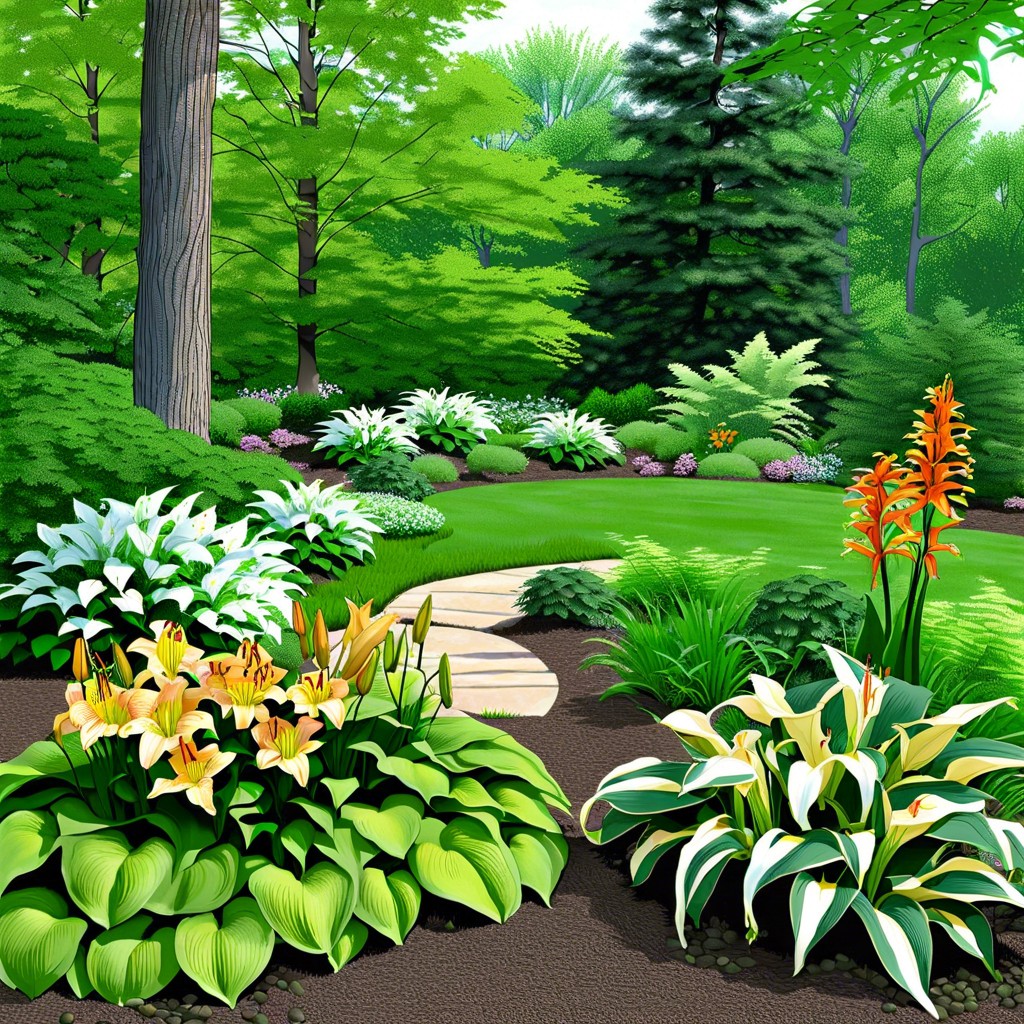Discover practical tips and key considerations for selecting the perfect garden edging solutions to enhance your outdoor space’s aesthetics and functionality.
Key takeaways:
- Importance of garden edging: Enhances aesthetics and prevents soil erosion.
- Choosing the right material: Consider durability, aesthetics, and maintenance.
- Installation tips: Prepare the ground, level the base, secure the edging.
- Maintenance and care: Monitor for wear, clean regularly, sweep back mulch.
- Incorporating in landscape design: Complementary styles, curves and lines, height dynamics, color coordination, transition zones.
Importance of Garden Edging

Garden edging serves both an aesthetic and functional role in landscaping. When done thoughtfully, it can elevate the overall appearance of your outdoor space, creating clean lines that define flower beds, pathways, and lawn areas.
Practically, it helps to prevent soil erosion from beds into grassy areas, reduces weed transfer, and keeps mulch in place. Additionally, edging can simplify lawn mowing and maintenance by marking clear divisions, saving time and effort in garden upkeep.
By outlining spaces, it also provides a clear visual layout, making it easier to plan and rotate plantings seasonally. Lastly, it acts as a root barrier to invasive species, protecting your lawn and gardens from unwelcome spread.
Choosing the Right Material for Garden Edging
When selecting materials for your garden’s border, consider durability, aesthetics, and maintenance level. Classic options include natural stone, which blends seamlessly with most landscapes but can be heavy and costly. Bricks offer a traditional look and can be laid in various patterns, yet they might chip or crack over time.
For a more modern aesthetic, metal edging, such as steel or aluminum, is sleek and long-lasting but can be prone to rust if not properly treated. Plastic edging is budget-friendly and flexible, perfect for curvy borders, though it may not withstand extreme weather as well as other materials.
Wooden edging adds warmth and a natural feel, but it requires treatment to prevent decay. Lastly, consider eco-friendly choices like bamboo or recycled rubber, which are sustainable and provide unique textures but may have limited styles or higher costs.
Remember to match the edging to the garden style: formal gardens may call for crisp lines of metal or brick, while rustic spaces could be complemented by the softer lines of wood or stone. Whatever material you choose, ensure it meets your garden’s functional needs and visual appeal.
Installation Tips for Garden Edging
To ensure a smooth installation of your garden edging, consider these helpful pointers:
1. Prepare the Ground: Start by defining the edges of your garden beds with a garden hose or string and stakes. This will provide a clear guideline to work with. Then, use a spade or edging tool to cut along your marked lines, creating a trench for your edging material.
2. Level the Base: For a professional look, make sure the base of your trench is level. Uneven bases can lead to a wobbly finish, so take your time to get this right.
3. Measure Twice, Cut Once: If your edging material needs to be cut to fit, always double-check your measurements before making any cuts. It’s better to be cautious than to waste materials.
4. Secure the Edging: Depending on the type of material, you might need to stake or anchor your edging in place. For rigid materials like metal or plastic, stakes are often required. Flexible materials, like rubber, should be anchored with landscape anchor pins to prevent movement.
5. Backfill the Trench: Once your edging is installed, backfill the trench with soil on the garden side to hold the edging in place. Pack it down firmly to keep everything snug and secure.
6. Water to Settle: Giving the area a good watering will help settle the soil and secure the edging further. This is an often-overlooked step that can make a big difference in the longevity of your garden edging.
Remember, take your time to install your edging correctly. Rushing through the process can lead to adjustments later on, which might require additional work and resources.
Maintenance and Care for Garden Edging
Regular monitoring is key to ensuring that your garden edging remains in tip-top condition. Keep an eye out for any signs of wear or damage, such as cracks or chips in stone or concrete options, and rust in metal edgings. As seasons change, it’s also wise to watch for movement due to freezing and thawing cycles, which can cause certain materials to shift or heave.
When it comes time to clean your edging, a simple hose down usually suffices for most materials, although a gentle scrub with soapy water can help remove more stubborn dirt. For metal edgings, you may need to apply a rust-inhibitor every now and then to prevent corrosion.
Mulch or soil often spills over onto edging, so be sure to sweep this back into your garden beds to keep your edging visible and effective. Trimming any overgrown grass or plants that begin to encroach on the edging will also help preserve the defined lines and neat appearance.
Lastly, if you’ve used natural materials like wood, consider a fresh coat of sealant or paint (if applicable) annually or biannually to prevent decay and maintain its aesthetic appeal. By investing a small amount of time into maintaining your garden edging, you can prevent larger problems down the line and keep your garden looking sharp throughout the seasons.
Incorporating Garden Edging in Landscape Design
Successfully integrating garden edging into your landscape design enhances both the functionality and aesthetic appeal of your outdoor space. Carefully considered edging serves as a crisp border, defining garden beds, paths, and lawns while adding structure to the overall garden scheme.
Complementary Styles: Choose an edging style that complements your garden theme. Rustic wood suits cottage gardens, while sleek metal aligns with modern landscapes.
Curves and Lines: Use curves for a natural, flowing garden look or straight lines for a formal, structured appearance.
Height Dynamics: Consider varying the height of your edging to create depth and interest, with taller borders for backdrop plants and lower ones for foreground highlights.
Color Coordination: Pick edging materials with colors that either contrast with or complement your plants and hardscaping for a harmonious design.
Transition Zones: Edging can be used to seamlessly transition between different areas of your garden, guiding the eye and movement around the space.
Implementing these points in edging choices will not only sharpen the look of your garden but also aid in its overall cohesiveness and character.




